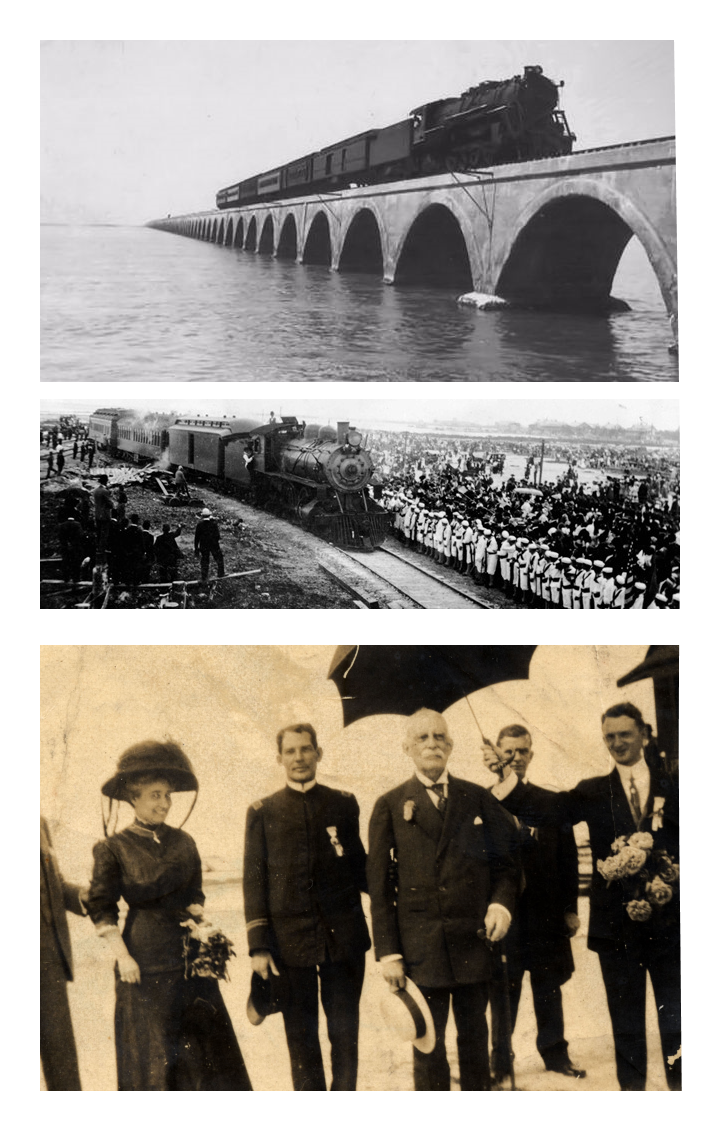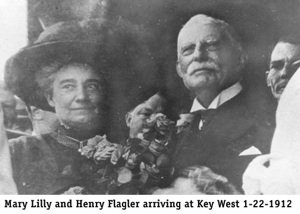Crowd Welcomes Henry Flagler’s Arrival in Key West
On January 22, 1912, the nearly twenty thousand residents of the city of Key West, Florida, located on a small island some 128 miles south of the Florida peninsula, observed the completion of an overseas rail connection to the mainland. The Florida East Coast Railway served the island until 1935, when it was destroyed by the Labor Day Hurricane, a Category 5 hurricane which is often called “The Storm of the Century.” It was replaced in 1938 by the Overseas Highway, built on the foundation of the old railroad bed. This system of forty-two bridges, which connects the Florida Keys to the mainland, is one of the longest over-water roads in the world.

Henry Flagler: The Railroad Visionary Who Changed the Keys Forever.
The Florida Keys & Keywest
By 1905, realizing the value of the Florida Keys’ tropical climate and transportation possibilities when the Panama Canal opened, Henry Flagler had determined to extend his rail line through the Keys to Key West. In building the FEC’s Key West Extension, widely called the Florida Keys Over-Sea Railroad, he remained undaunted despite near-overwhelming construction challenges, storms and widespread skepticism about the project’s feasibility.
“It is perfectly simple,” he said early in the process. “All you have to do is build one concrete arch, and then another, and pretty soon you will find yourself in Key West.”

Under the direction of Flagler and his team, a series of bridges and viaducts took shape that ultimately stretched more than 100 miles out into open water. Completed in 1912 after seven years of unrelenting labor, it cost Flagler an estimated $50 million and required unparalleled vision and unswerving perseverance.
According to a volume released in 1912 announcing the railroad’s debut, Flagler possessed those qualities in abundance.
Add to this the fact that Mr. Flagler has, to an unusual degree, the ability to draw and bind men to himself and to inspire them with faith, devotion and loyalty,” the volume’s unnamed author stated, adding that Flagler also had “a determined and consistent regard for good and permanent work” and “a wise and well-guarded disregard of the cost.”

By early 1912 Flagler was in his early 80s and in poor health, but his railroad from mainland Florida throughout the Florida Keys was finished.
The inaugural train from Miami pulled into the Key West terminal Jan. 22, 1912, carrying Flagler in his luxurious private car. Stepping out, he was greeted by dignitaries, citizens, schoolchildren and Key West Mayor J.N. Fogarty — all cheering his fantastic accomplishment.
Frail and almost blind, he stood with tears streaming down his face.
“I can hear the children,” Flagler said, “but I cannot see them.”
Later, summing up the realization of his dream, he said simply, “Now I can die in peace.” He did so in May 1913 at age 83.
Over the next two decades, the Florida Keys Over-Sea Railroad carried thousands of passengers between Miami and Key West. Though it was not rebuilt after being damaged in a 1935 hurricane, Flagler’s railroad is still lauded for its monumental impact as the centennial of its completion is celebrated in the Keys.
“The Keys were, with the completion of the railroad, a completely different world,” said FEC historian and author Seth Bramson. “The successful completion of the Key West Extension added to Flagler’s legacy to the point that today the name Henry M. Flagler is the single greatest name in the history of Florida.”
